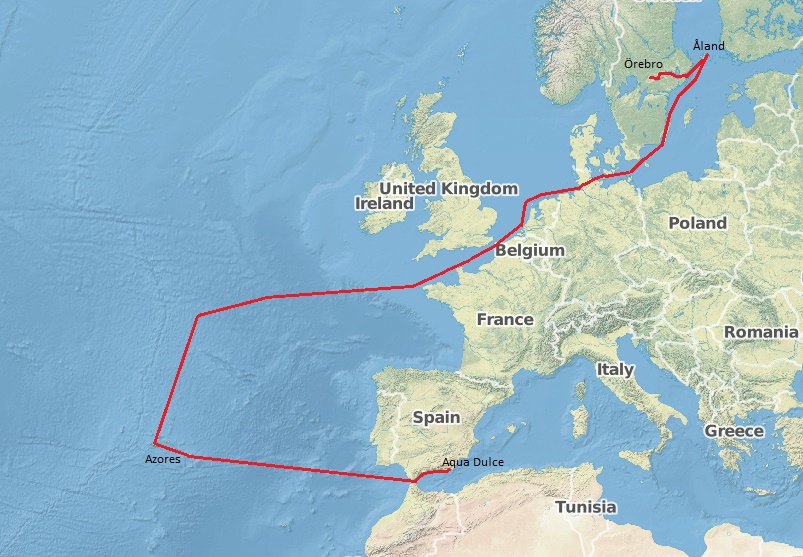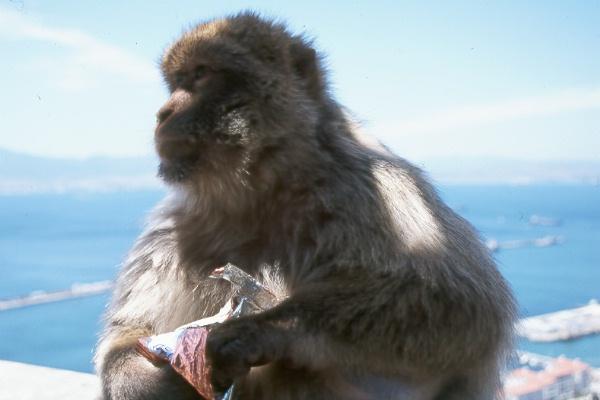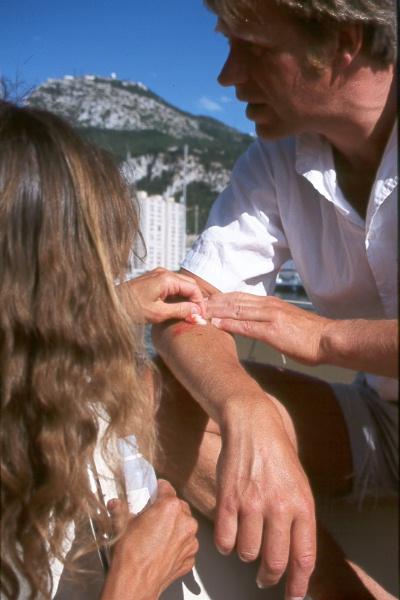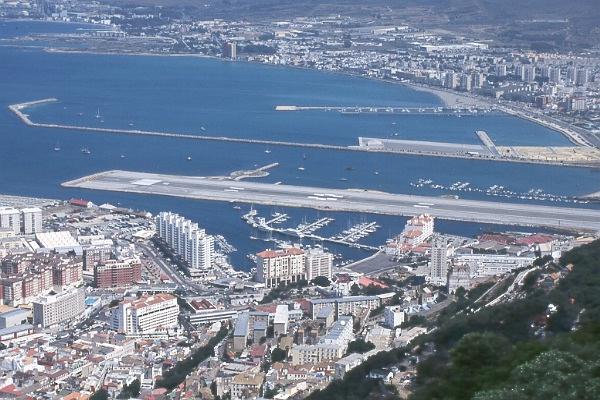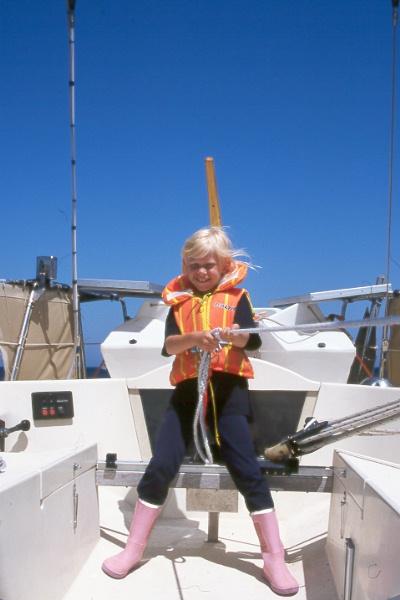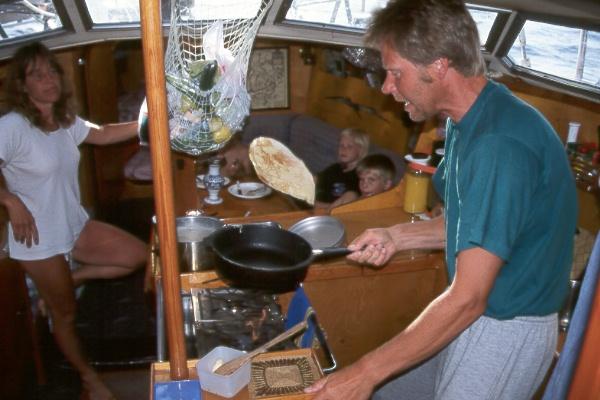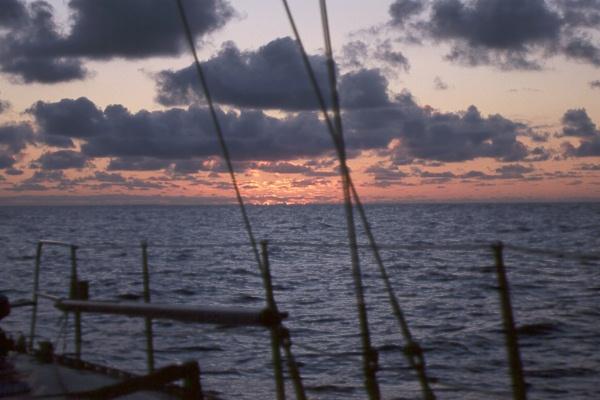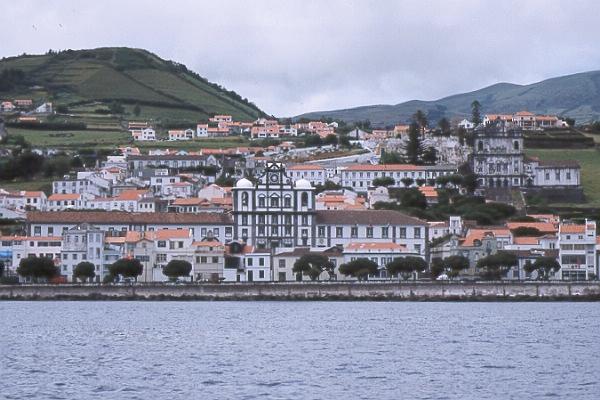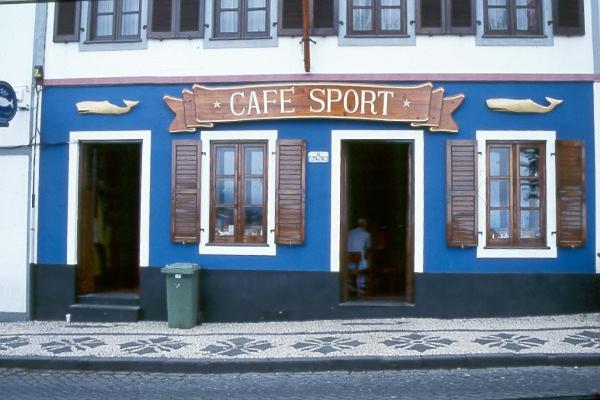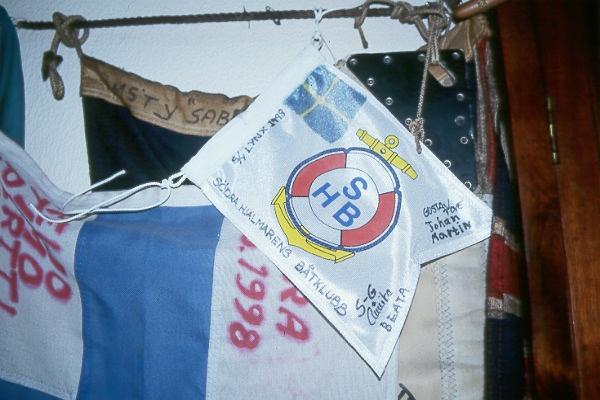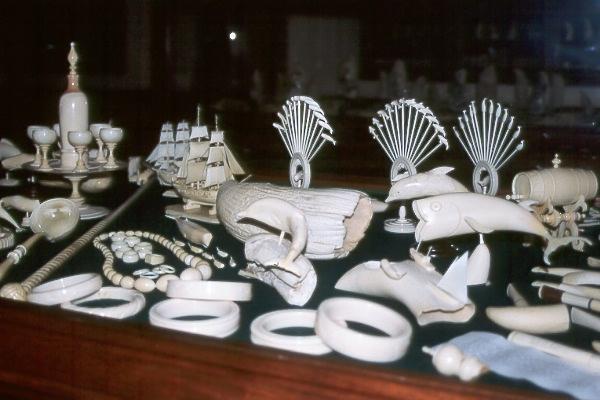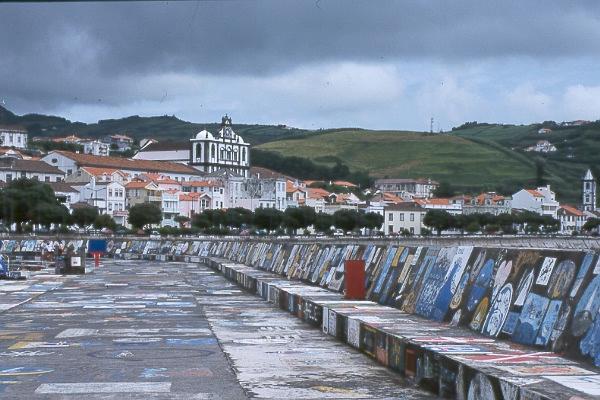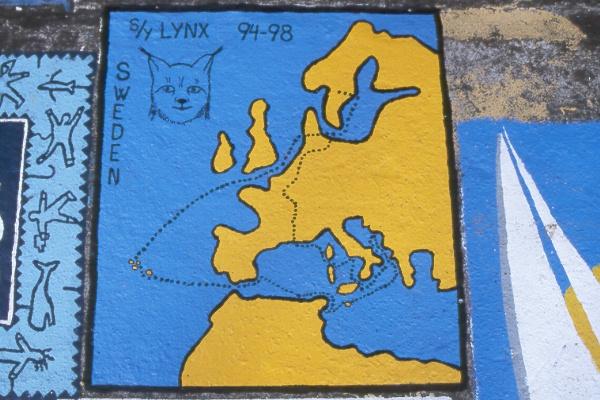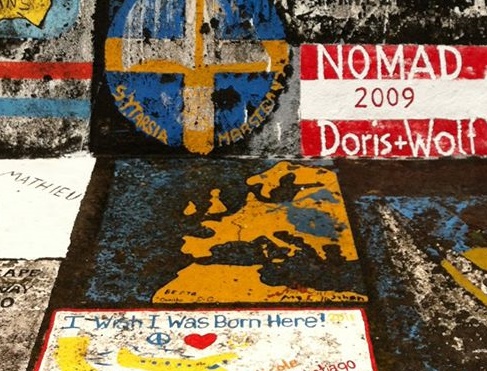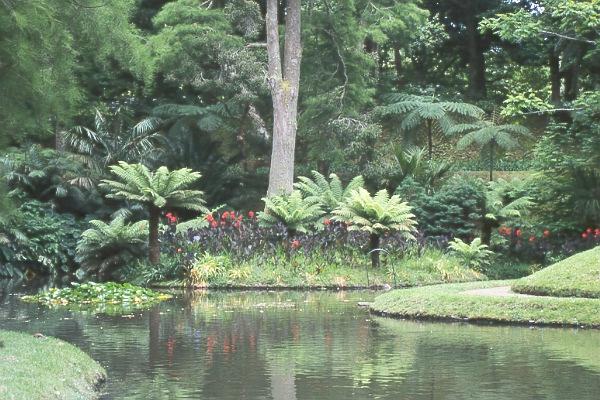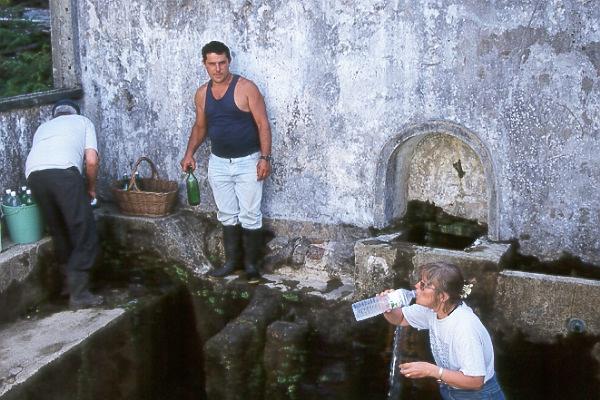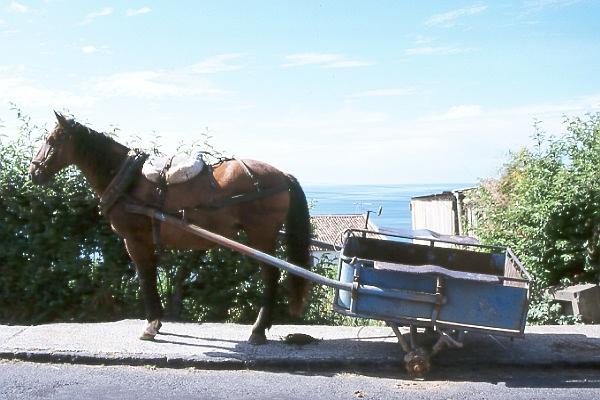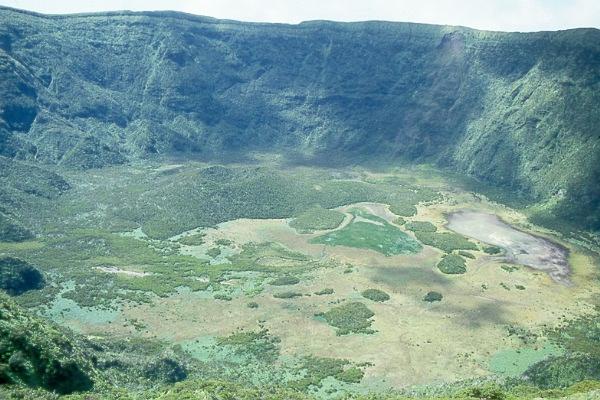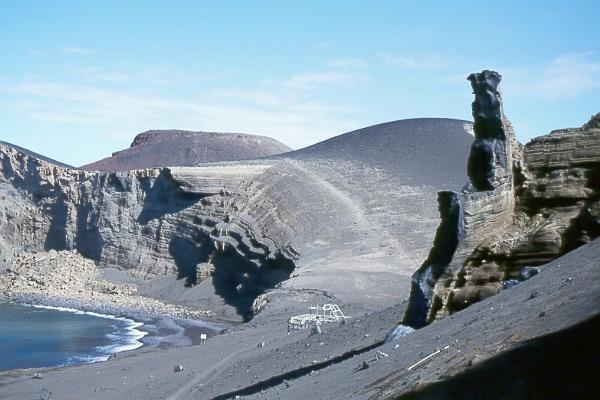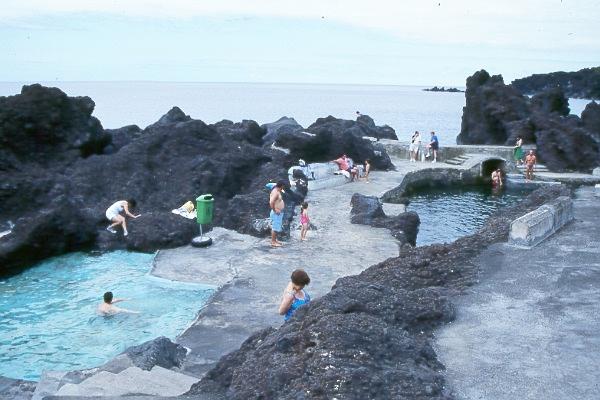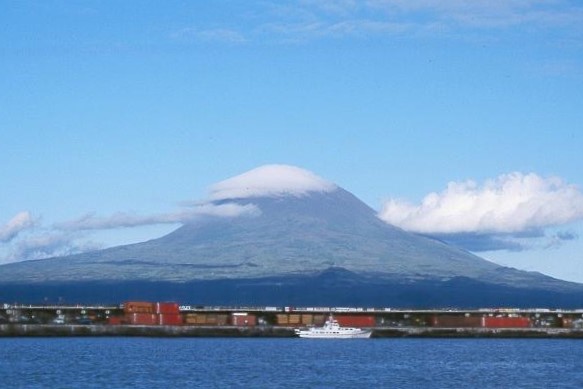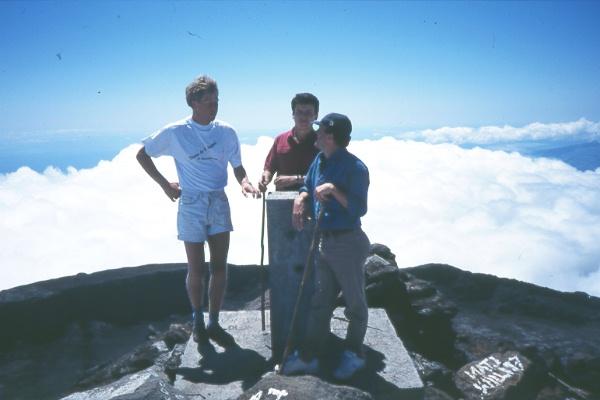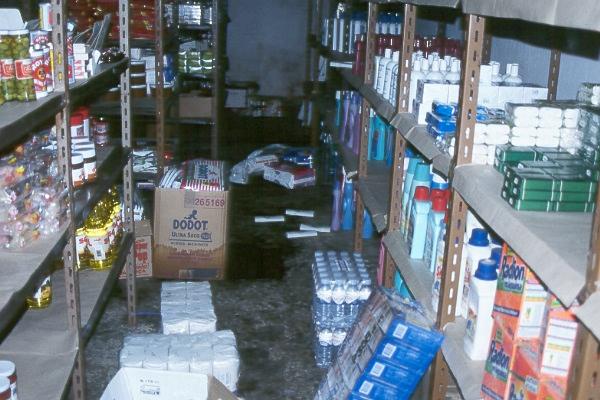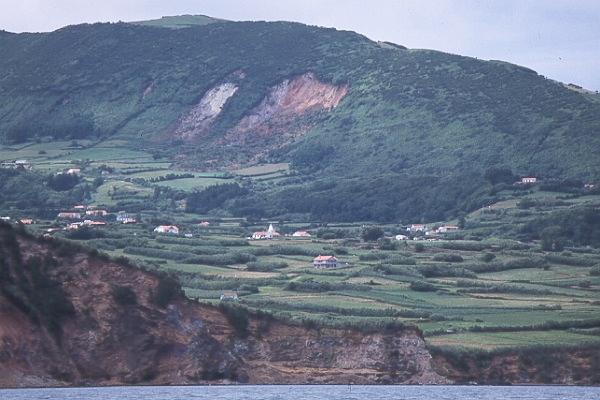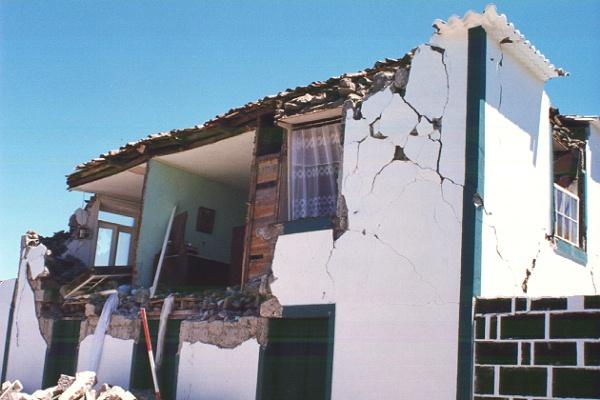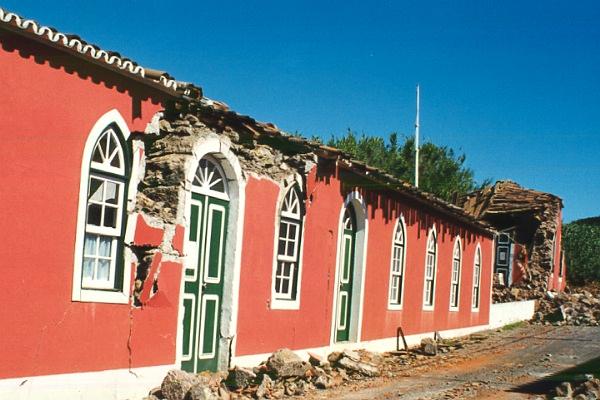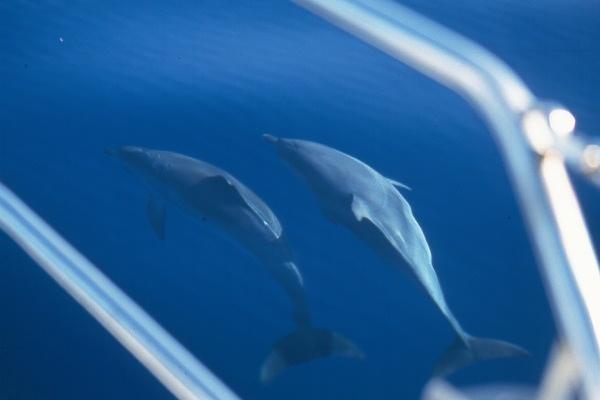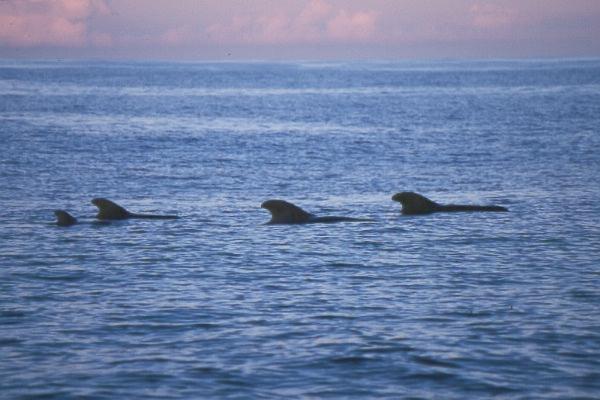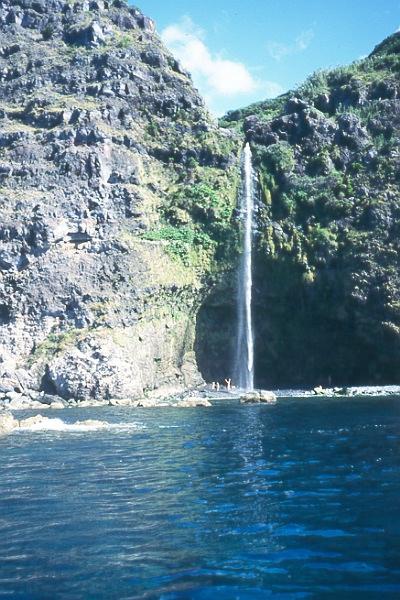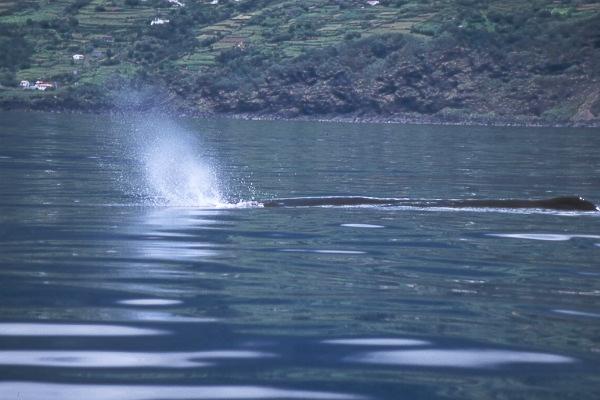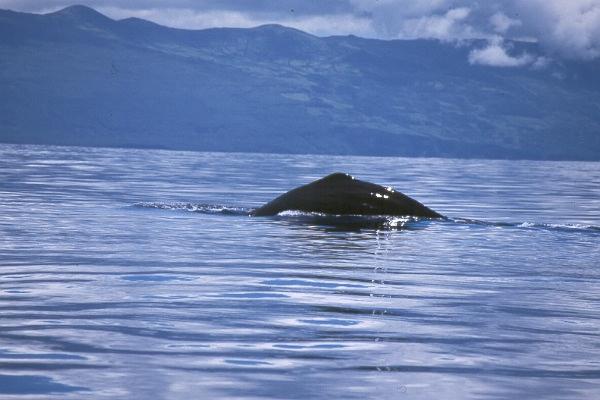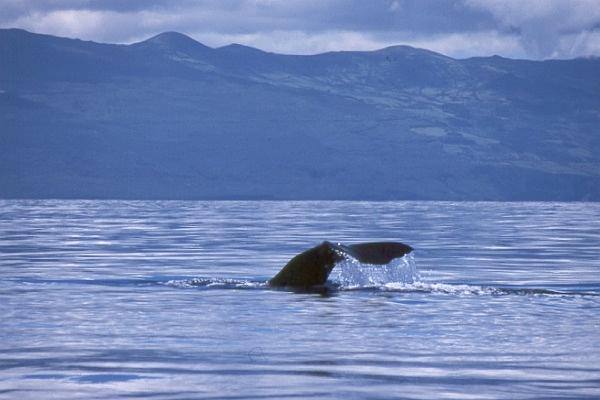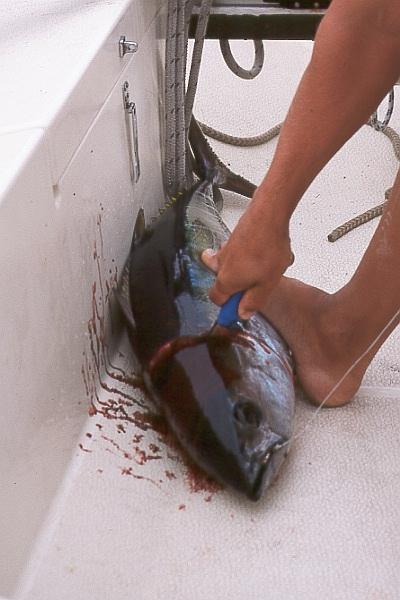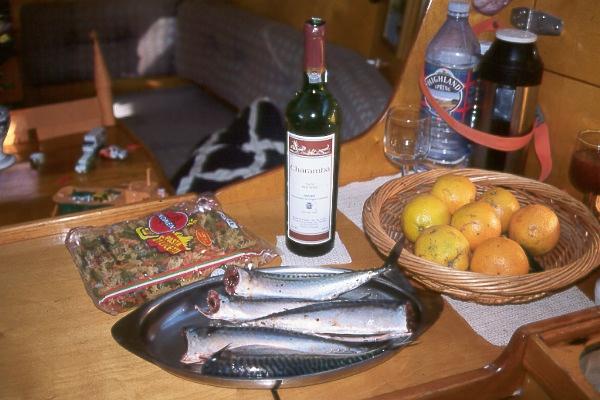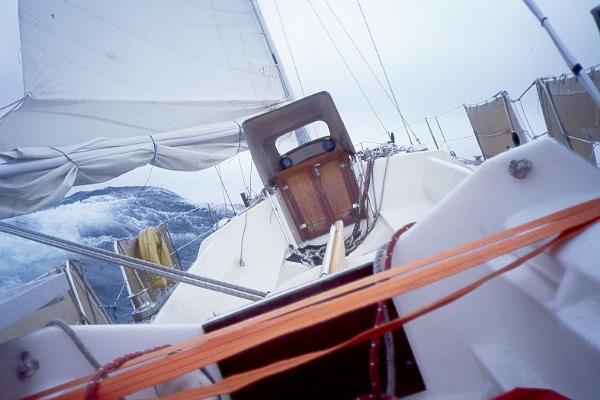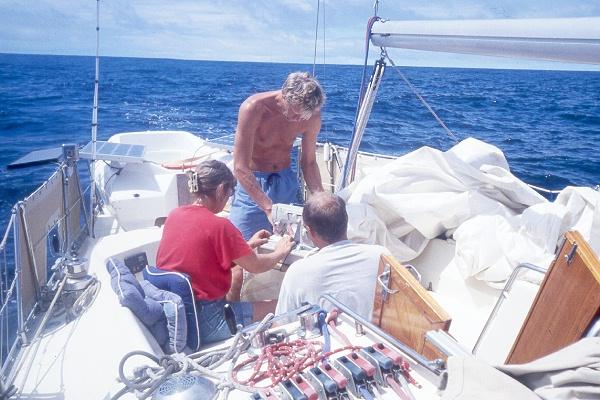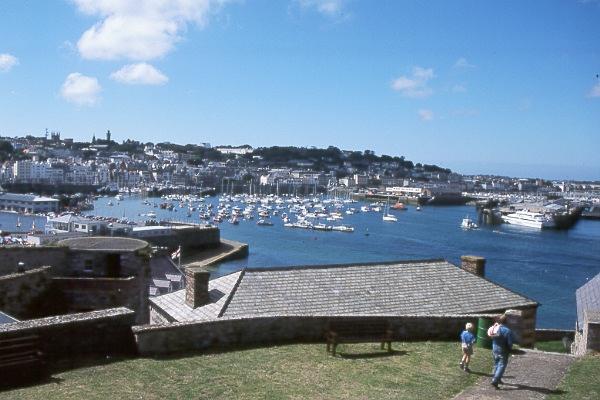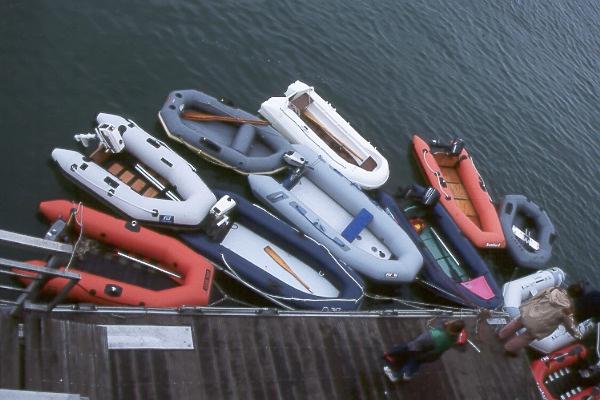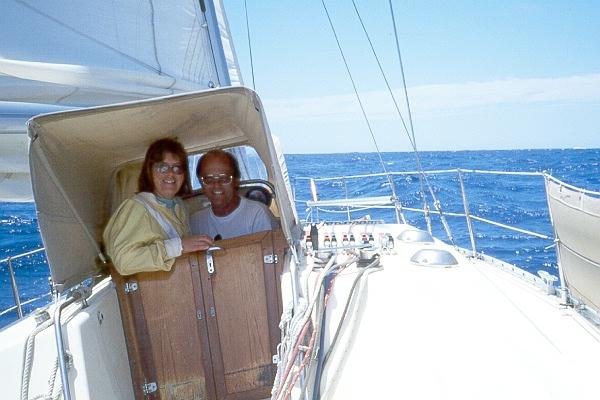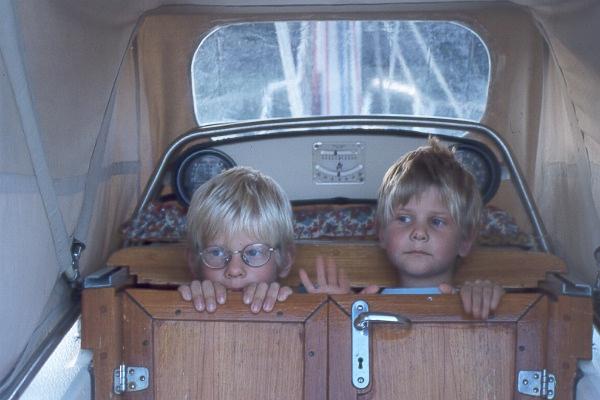
 1998
1998


Azores and back to Sweden
Spain, Azores, England, Holland, Germany and Sweden by Johan Kjellander 1998-2014 På svenska
Summer-98 we left Aquadulce in south Spain and sailed back home to Sweden. On our way we visited the Azores Islands where we experienced a serious earthquake. We spent 30 days at sea and sailed 4500 NM.
Tove took more than 600 pictures on this voyage. You can se some of them here. Five of the pictures comes from the Lindgren family and one picture is taken by a photographer on a local newspaper in Horta the day after the eartquake. I wrote the texts.
Gibraltar
Lynx left Aquadulce in early June and sailed west. We had guests on board, the Lindgren family with 7-year-old daughter. They would accompany us all the way to England.
We stayed in Gibraltar a few days for provisions and to check out the sights. You can see one of the most famous ones in the picture. They are completely fearless and quick as lightning. The peanut bag he has in his hand, he took from Toves breast pocket. She had a jeans jacket with a lid over her chest pockets so he had to first fold up the lid and then put his hand down to steal the bag. It was faster than anyone could see.
Monkeys can get very angry. One of them stole a bag of snacks from Sven-Gunnar and when he tried to take it back he was bitten. Quite a lot. 4 deep grooves on the forearm after the monkey's teeth. We were worried of course. We had a long sailing out to the Azores in front of us and didn't want SG to get sick at sea. Annika washes carefully with liquor and SG enjoys (or doesn't he?).
Gibraltar is a small peninsula that consists of a high cliff where the monkeys live and a narrow beach where the people live. The view from the cliff is stunning. The picture shows the marina where Lynx is and part of the airport's runway just next door. On the other side of the runway is Spain.
After a few days of preparations in Gibraltar, we set out for the Azores. 350 liters of water in our tanks and another 100 liters of mineral water in cans. 250 liters of diesel and lots of food and other equipment. Thus, full load. We got good wind and the weather was great. Seven year old Beata enjoyed the speed and the lovely weather. All three children always had a life jacket and lifeline as soon as they were outdoors.
5-year-old Gustav got a little sea sick the first few days but then the appetite for food came back and he wanted pancakes...
SG challenged Tove in the galley and here he succeeds really well. If you look closely you see that both SG and Annika stand and hold or take spear somewhere. We had rough sea and the boat was rolling. After a few days you don't think about it anymore and the boat can move quite much without actually being a problem. You will soon learn where to stand, sit or lie comfortably without getting cramps.
Sunset on the Atlantic. Is there anything more beautiful? When the sun goes down we often sit outside waiting to see if we will experience a Green flash. Green flash is an optical phenomenon that expresses itself in such a way that the very last bit of the sun illuminates and becomes strongly green colored for a second just before it disappears under the horizon. We actually did see it once during the trip to the Azores but it seems to be difficult to get it on film.
The Azores
Our first stop was Ponta Delgada on St. Miguel. The trip took 8 days and sailed distance was about 1100 nautical miles, of which only 100 for motor. We were happy with that. After a wonderful week in St. Miguel we continued to Horta on the island of Faial, 150 miles further west. The picture above is taken just as we enter Hortas harbor.
In Horta you meet sailors from all corners of the earth. Many on their way to Europe from the US or the Caribbean but also sailors heading south, or as us heading home from the Mediterranean. During the 1950's, Horta was used by the first transatlantic passenger airliners who went down here to refuel.
Legendary Cafe Sport. All sailors come here. Where do you come from, how long did it take, did everything go well, where are you going now? Hey, are you here! It was a long time ago. Do you remember ..... Talk and gossip goes. Here we had both one beer and two.
Walls and ceilings at Cafe Sport are filled with flags and pennants from all corners of the world. SG and Annika brought a flag from our club at home in Sweden, Södra Hjälmarens Båtklubb. This is what it looks like.
Whaling was an important industry in the Azores in old times. 15 years ago they stopped hunting the whales and now you can only look at them. Whale watching with inflatable boat is a major tourist attraction. Artworks made from whale teeth or whale ivory are also popular. How they get hold of the raw material I do not understand but the works of art are for sale and new are manufactured by local artists. Expensive but beautiful.
The most obvious tourist attraction, however, are thousands of pictures painted by the crews of boats that have passed. Sailing from Horta without leaving your picture on the pier means bad luck. You can walk for hours and watch. Some are incredibly well made, real works of art.
We made a blue and yellow map of Europe with our route during the years 94-98 marked in black. Everyone attended, even the children who made their own little pictures. Before we came to Horta, we talked about where to get the appropriate brushes and paint for the painting, but this turned out to be the smallest problem of all. Every store in Horta sells brushes of different sizes and small color cans in all the colors of the rainbow. The staff knows exactly which brush to have for texting and which one to use for painting waves at sea!
In 2014, friends of us sailed past Horta and found our 16 year old painting. Thanks Matti and Pirjo on S/Y Jaya, Pirjo took the picture.
The climate is mild and humid and the vegetation is fantastic. The Azores are located in the middle of the Gulf Stream. On St. Miguel there is a park called Terra Nostra in the small town of Furnas. Very beautiful with lots of Hydrangea, the island's dominant plant number one. In the middle of the park is also a small lake with a hot spring where you can swim if you want.
The Azores have been formed by volcanoes that have emerged from the seabed where the American and European continents slowly move away from each other. The same crack that formed the Canary Islands and Madeira in the south and Iceland in the north. Everywhere you see signs of volcanic activity. In Lambada on St. Miguel there is a natural source of carbonated water where people go to fill their bottles completely for free. Here it is Tove that tastes the excellent table water.
There are plenty of cattle on the islands. The mountainous terrain means that many farmers milk their animals out on the pastures and transport the milk home by horse. Thus there are also plenty of horses. Here is one that has encountered technical problems. Completely abandoned, it appeared, where it stood and waited for its owner to return with a new wheel.
At the top of Faial is this huge volcanic crater, or Caldeira as it is called in Portuguese. 2 kilometers in diameter and 400 meters deep. Imagine what spectacle it must have been when it was once formed.
At the end of the 1950s, there was a volcanic eruption in the sea just west of Faial. Slowly a new island arose and after a while it grew together with Faial and destroyed among other things the large lighthouse on Faial's western cape. The lighthouse is today half buried in ash so you can step right in through the windows on the second floor. Between the actual crater at the far end of the picture and Faial, a large ash pile was formed which Martin and I climbed to have a look at the view. A mile-long lunar landscape that nature has not yet conquered. In a small museum next door you can see a photo collection of the eruption that lasted for over a year. Despite the fact that it was black and white images, you really understand that it must have been a terrible experience for the people who lived here.
From the lava flowing down into the sea, you can make a good swimming pool. Here on south Faial, they have improved what nature started and created a great adventure pool with several different sections and a natural wave machine in the form of a small tunnel that leads the swell from the Atlantic into one of the pools. At the far right of the picture you can see the small tunnel. On the north side of Faial there is a similar facility.
East of Faial is a slightly smaller island named Pico, just like the magnificent volcano that created the island. The highest volcano of the Azores, 2350 meters, higher than the highest moutan in Sweden, Kebnekajse. The top is often embedded in a small cloud that can look quite funny, like a hat. If you want to, you can take a taxi boat from Horta and climb the volcano.
The Lindgren family went over to Pico one day and SG managed to get up all the way to the top. Here he is, with two Portuguese hikers, that made him company. 2350 meters above sea level. Higher than the clouds and with a huge view of the islands. At the top right of the picture one can observe Horta on Faial between the clouds.
I woke up at five one morning from an awful noise from the rig. Much like when you run aground. It rattled for a long time and I ran up to see what it was all about, but everything was quiet so I went down and fell asleep again. By 9 o'clock everyone aboard was woken and we sat in the cockpit with our breakfast.
"Very much ambulances today" said SG and the same thought had just passed my mind. Ambulances passed us one after one and we wondered what it could be. Suddenly, the mobile phone rings and my mother at home in Sweden wonders if we are affected by the earthquake! Then I realized there had been an earthquake at Faial early in the morning and this had been reported on the news at home. The first reports talked about 10 dead and many ruined houses in several different places on the island, but not in Horta. The sound I heard at five in the morning was the chockwave from the eartquake transmitted through the water.
Later that day Tove and Annika left to do some shopping but it turned out that almost all business were closed. In the end, they found an open place and there the goods were all over the place. Shelves had overturned and cooking oil mixed with wine floated around on the floor. The staff did their best to clean up.
The epicenter of the eartquake was 1.5 kilometers out into the sea northwest of the island and the strength was 5.6 on the Richter scale. Soon there were more reports of the injuries. 20 dead, 150 injured and 1000 people who had their homes destroyed. The hardest hit was of course the northwestern part of the island where large buildings, among other things, a whole church had been leveled to the ground. A few days later when we left the Azores, Tove took this picture. The mountain had collapsed and slided towards the settlement below.
Everywhere destroyed houses. Horta did pretty well, but there was damage to some houses. On the afternoon of the first day, military aircraft and helicopters began to fly in equipment and later ships arrived to the harbor and unloaded excavators and bulldozers. It was the largest disaster in the Azores since the Great Volcano eruption 40 years ago that started with a heavy earthquake.
The happy atmosphere in Horta disappeared and everywhere we saw crying or despised people. The ambulances continued for several days and the shops were closed. The flags at half bar. People were not allowed to sleep indoors at night, but lay on mattresses everywhere in parks and squares. At Cafe Sport, the rescue crew met and discussed loudly and many people just sat quietly and held each others hands. As an over-protected and spoiled Swedish, it felt completely unreal to suddenly find yourself in the midst of a true catastrophe. It was a nice feeling to leave Horta aand set sails for home.
There are plenty of whales around the Azores. The smallest are the dolphins that are very numerous. They love to play around the bow of the boat and can keep on for half an hour or more. Although the speed is sometimes 7-8 knots, they easily swim away from us if they want. Normally you see them only when they jump out of the water to breathe but in calm weather you can see them clearly even under the surface in the clear water.
These are Pilot Whales. They come in large numbers and swim slowly for a long time after the boat. They are bigger than the dolphins but still belong to the smaller ones among the whales. They are 4 - 5 meters long and weigh 2.5 - 3 tons.
On our way between St. Miguel and Faial we passed the island of St. George where we found this magnificent waterfall. Of course we had to stop and go ashore to take a fresh shower. The waterfall was almost 40 meters high so you had to be careful. The water had good speed when it fell from such a high level.
In the strait between St. George and Pico we suddenly saw something that sprayed out of the water. A whale screams everyone and run like wild chickens for the cameras. We approached by engine carefully and looked at the strange animal that seemed to be sleeping in the water. After a while we swung around so that we ended up behind it and then it woke up and started moving.
The whale woke up when we came too close. When a dolphin dives, it says plop and they are gone. This one was big and it took ages before the whole body passed by and the tail finally came up in the air. What an experience !
In the end, only the tail was left but Tove managed to take several pictures before it disappeared. We think it was a Sperm Whale and later also got this confirmed. Sperm whales are common around the Azores and they have a sure sign that one cannot miss. When they blow, the water jet does not go straight up into the air like other whales but at a 45 degree angle forward. Look at the first picture and you will see.
The females are 11-15 meters and weigh up to 20 tonnes. The males are 15-20 meters and weigh up to 70 tons!
To England with a sick child
We left the Azores and set course due north. There was no wind so we had to motor but this was not a surprise to us. There is often a big high pressure on the north Atlantic with its centre over the Azores, thus no wind, but if you motor to the north a day, or two or three you usually get a nice westerly that takes you further up and into the low preassure weather systems that rule the British Islands.
One day at sea Beata had fever. It got worse and worse and she complaind about pain in her back. Her parents suspected a Urinary Tract Infection affecting her kidneys. Next day she was even worse, the fever was now 40 degrees celsius. We needed to talk to a doctor. So, I called the coast radio station in Lisbon, Portugal on my HAM radio. It took a while but suddenly they answerd. I explained the situation and asked them to connect me with my father in Sweden by telephone. My father is a doctor at he regional hospital in our home city Örebro and it was he who had supplied us with the antibiotics we had on board.
I explained Beata's symptoms and he asked me to standby while he consulted a colleague who was specialized in childrens medicine. After an hour, Lisbon Radio called me again and now my father was on the line with instructions what to do. "Do not use the antibiotic that is labled For Urine Tract Infections" he said, you must use the ordinary antibiotic for throat infections. "Give her a double dose for adults immediately". The pills for Urine Tract Infection are for adults only and have serious side effects if used on children.
Wow, this was a day when everybody was nervous, but Beata got her pills and the next day she was playing again as if nothing had happened. There is one more chapter to this story however. 12 years later the doctor who was consulted by my father had left the hospital and was now the Vice Chancellor of Örebro university. Every year the university has a big ceremony where people who have been in government service for 30 years are awarded a gold medal. This year Tove was one of those and when she stepped forward to recieve the medal from the Vice Chancellor he took the opportunity to tell the audience the story about how he had been called from a boat in the middle of the Atlantic with a very sick child on board. It is a touching story and it also shows how important it is to have medication on board and technology for communication when you are many days out at sea.
One day we managed to catch a 12 kilo White Tuna on our fishing line which almost always hangs after the boat when we sail. We ate tuna in three days and then leftovers on tuna for two days. Taking care of such a large fish reminds more of slaughter than of cleaning. The meat is dark red and suits perfectly for frying as cutlets or in pieces in a soup or ground as a fish pudding. It is important to vary!
Our tackle is a 1 mm nylon line about 30 meters long. 10 meters from the end, a flush-shaped lead weight of about 1 kg hangs and as bait we mostly have a 10 cm long octopus made of nylon with three hooks with barbs. Even mackerel takes the plastic octopus.
If you get one mackerel you often get more. This dinner I pulled up in less than 20 minutes somewhere in the English Channel. Doesn't look that bad, does it? (Lucky to have Tove who is a good cook!)
The weather became increasingly unsteady the closer we came to England. The last few days a low pressure passed and we had to reef our sails. We sailed nearly a whole day in this way with just a bottom-reefed mainsail. Despite the harsh wind and the relatively rough sea, we probably didn't think so much about it. You get used to this.
Lynx has a good autopilot and if you are careful to adjust the settings after the weather, she steers very well. I do not remember that we even once hand steered to or from the Azores. It is important to reef in good time and not push the boat to the absolute maximum speed. For us aboard, it will also be much more comfortable in this way.
Things break every now and then. We got a rip in the mainsail but thanks to the girls discovering it at an early stage, we could avoid the whole sail being destroyed. When the weather calmed down we started the engine for a while and took out the sewing machine. A half meter long patch was sewn over the tear and then we made full speed again.
After 10 days and about 1350 nautical miles, of which 140 for motor we came to St. Peters Port on Gurnsey where the Lindgren family would leave us. Here, the tide is strong. There is a harbor basin that has a threshold in the inlet, which means that the variations inside will not be more than a few meters even though it is 7 - 10 meters outside. You can only get in or out at high tide. We did not get a place inside but were assigned a place outside between two buoys.
It gets crowded at the landing jetty when everyone arrives by dinghy.
The Lindgren family left us after 7 weeks on board. Thanks to the fact that they are experienced sailors, everything worked beyond expectation despite the crowded boat and sick children. Now it felt like we only had a short bit left home to Sweden and that we could easily do ourselves.
Good bye and thanks from Johan, Tove, Martin and Gustav.
